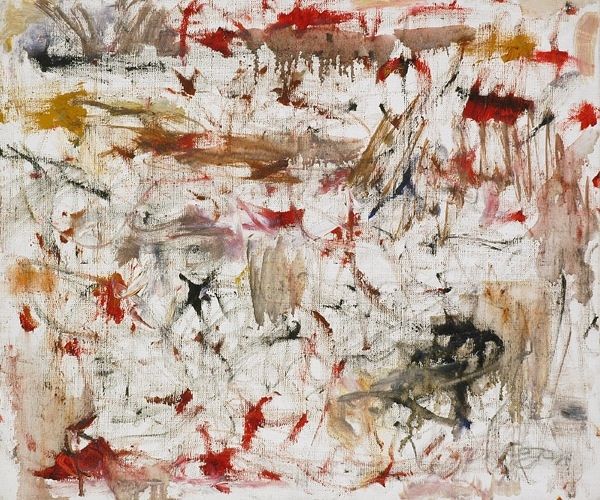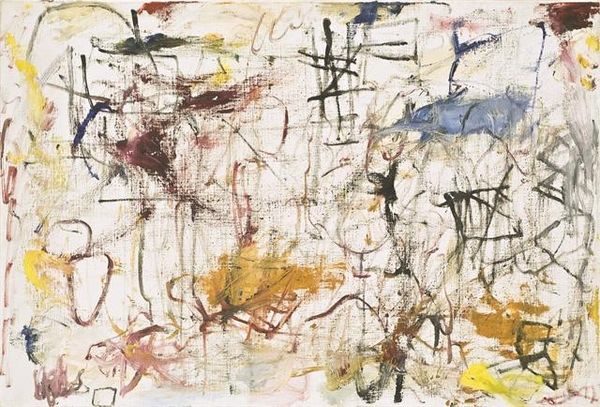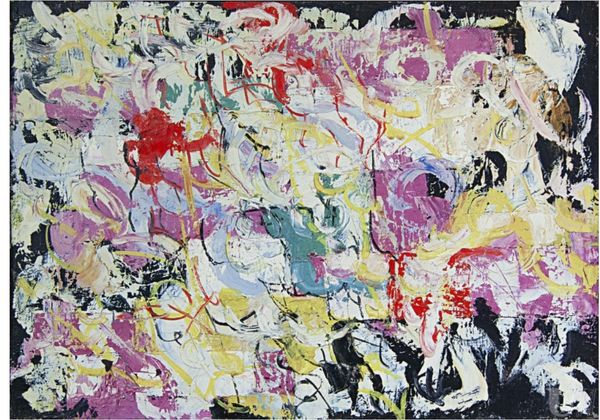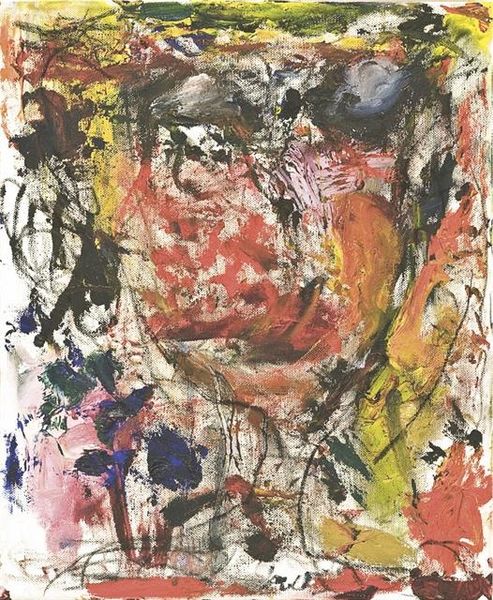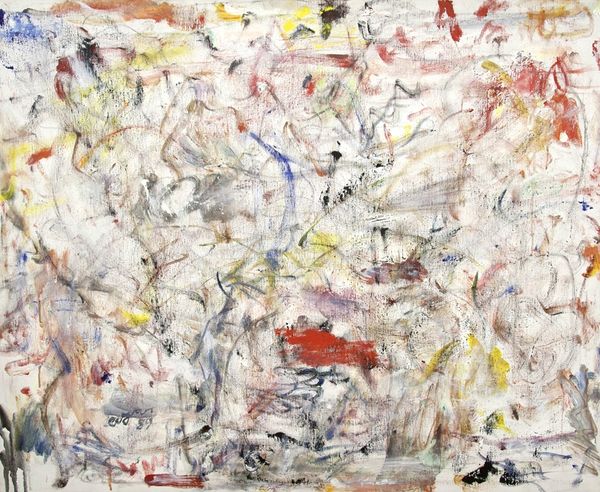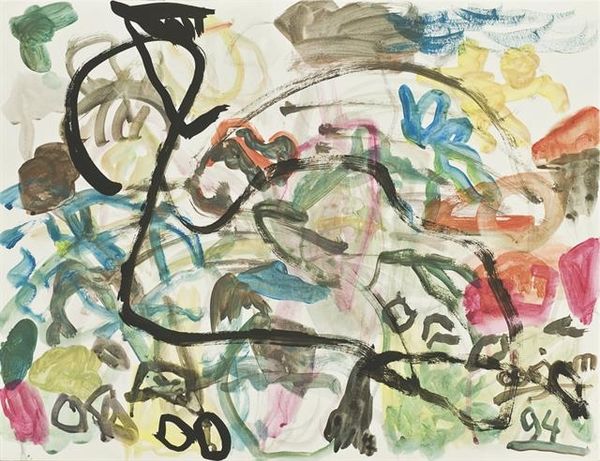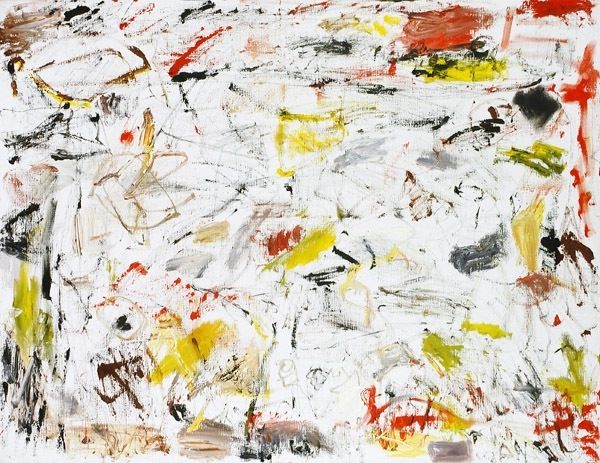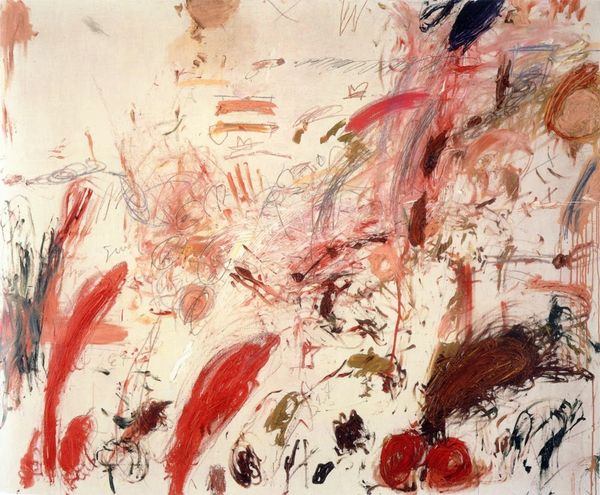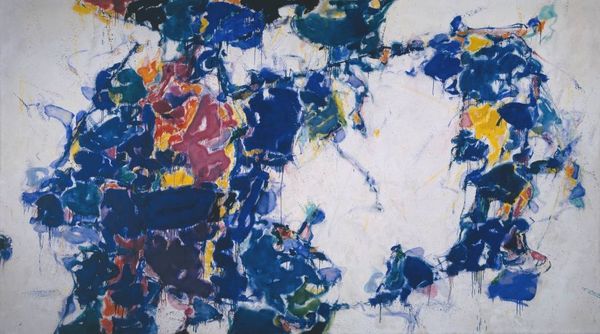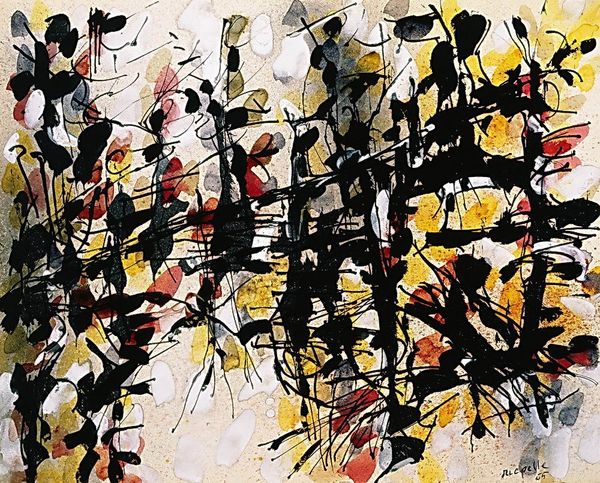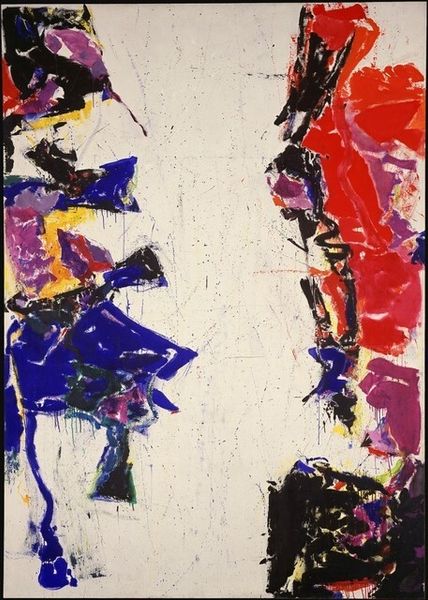
painting, acrylic-paint
#
abstract-expressionism
#
abstract expressionism
#
painting
#
acrylic-paint
#
abstraction
#
modernism
Copyright: Aurel Cojan,Fair Use
Editor: Aurel Cojan's "Abstract Composition 6", utilizes what looks like primarily acrylic paint in a flurry of marks. It has an improvisational, almost frantic energy, what do you see in this piece through your lens? Curator: I'm particularly drawn to the physicality of the paint application itself. You see those bold, gestural strokes. I consider what kind of tools were employed. Was it solely brushes, or were there other implements? Consider the socio-economic conditions that enable the artist's access to these materials. How does mass production impact artistic choices? Editor: That's fascinating. I was so focused on the overall image I missed the connection between tools and larger systems. Curator: Think about the labor involved in creating this work. What are the physical demands on the artist? Where did Cojan source the materials? Acrylic paint, itself a product of industrial chemistry, connects the artwork to broader networks of production and consumption. Editor: So, viewing this through a materialist lens encourages us to ask not just "what does this mean?", but also "how was this made, and what were the conditions that allowed its making?". Curator: Precisely! This approach helps us break down the Romantic notion of the artist as a solitary genius and contextualizes artistic creation within material realities and labor systems. Are you left with a different interpretation based on our discussion? Editor: Absolutely, I realize that, by exploring production, one can appreciate not only the artistic vision, but the wider conditions that give artwork physical form and resonance. Thanks so much! Curator: My pleasure. Keep exploring art's intricate connections to the material world!
Comments
No comments
Be the first to comment and join the conversation on the ultimate creative platform.

